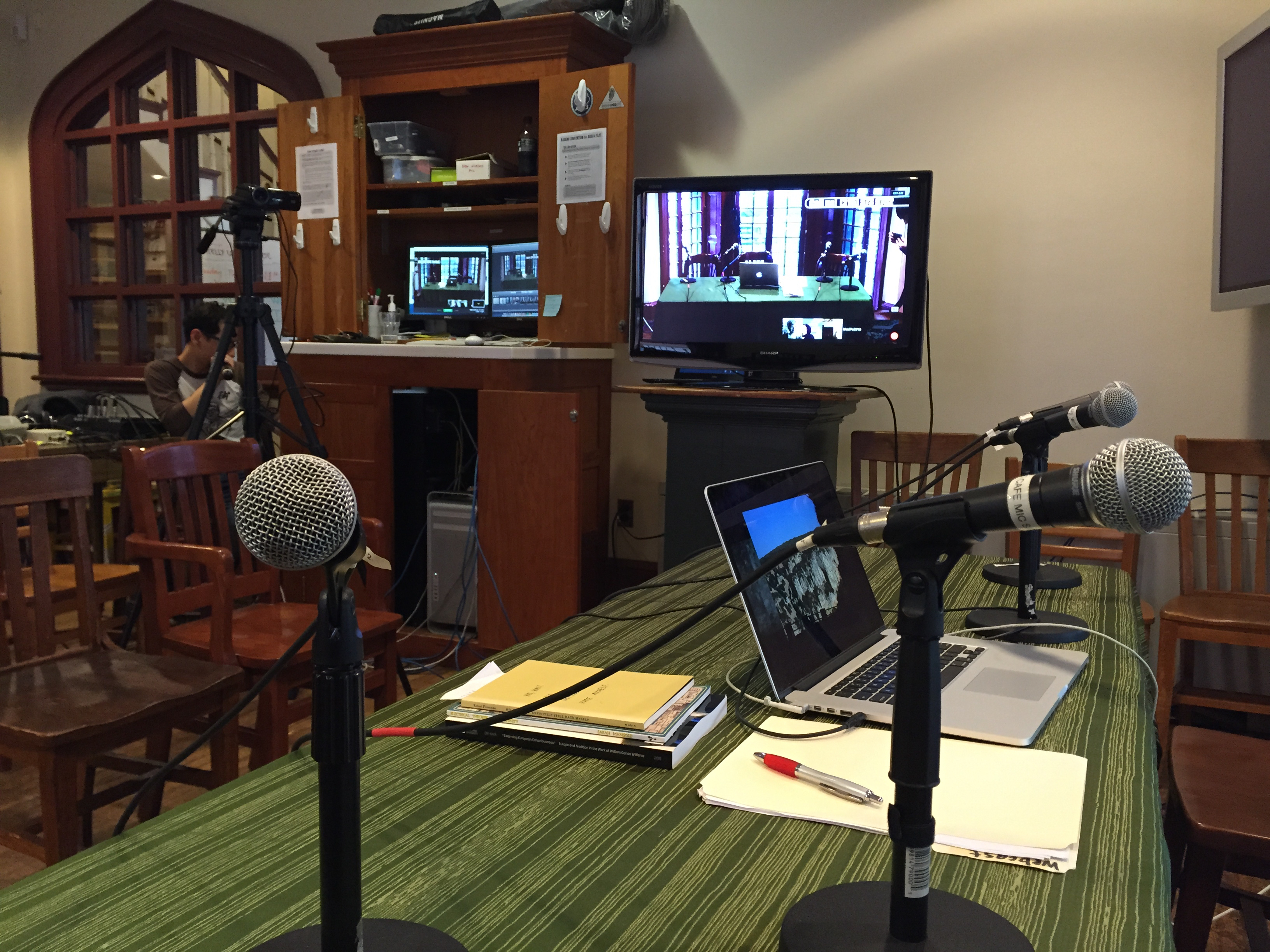
As an I.T. Professional at the University of Pennsylvania, I’ve been lucky to work on Al Filreis’ 10-week Modern and Contemporary Poetry MOOC (Massive Open Online Course) on Coursera. The free, not-for-credit course is comprised of nearly 100 pre-recorded video lectures, weekly quizzes and 4 writing assignments. Over the past 4 offerings of the course:
- More than 144,000 total students enrolled
- More than 1 million posts were added to the discussion forums
- The course has been featured in numerous news and media outlets, including Al Jazeera
Despite most of the content being pre-recorded and ready to go ahead of time, the course uses interactive live webcasts each week as a way to create a sense of instructor presence. This has been key in maintaining outstanding engagement in our MOOC. Despite being optional and supplemental in nature, it is common for hundreds of students to be tuned in to the weekly webcasts. Frequently, more than 10% of active enrolled students across the globe are tuned-in, calling in to the webcast to ask questions via on-air telephone call, interacting on social media and talking in the course’s discussion forums.
While many MOOCs and online learning platforms are trending towards automation and the absence of the course instructor, it is through these webcasts that the course develops a strong feeling of community among learners:
"The community is given center stage in live webcasts” -Dave Poplar, Teaching Assistant
"There has been excellent content and material. But what has been even more rewarding has been the warmth exuded by [the instructor] Al Filresis and his team through the video discussions and live webcasts. I feel I know them and they have been genuinely interested in my learning experience." -Phyllis Blanck, Student
"They have really figured out how to engage with such a large group. It has been an incredible experience." -Wendy Mitton, Student
While a “webcast” is technically defined as one-way broadcast, the course’s live webcasts takes it to another level by adding interactive components or ways for students to directly participate in the experience. We take live phone calls from students, host a live audience and monitor social media and the course’s discussion forums for comments and questions. Most recently, we added a “voicemail” line that students can call at any time of the week to leave a comment or question. We play back some of these messages during our live webcasts. Offering these multiple outlets for participation allows students to engage at whatever level they’re comfortable with and, I believe, contributes to our steady level viewership throughout a webcast. To read more about this, check out this article on how to create engaging live webcasts.
"One of the best courses I've taken on or offline. You don't just take a course, you effectively join a community of like learners and are in maximal contact with them and the course staff. Great videos, live webcasts, awesome forums. Best use of the Coursera platform I've seen in any classes--by a wide margin.” -Brooke Brines, Student
"The special activities like live webcasts and Facebook interactions from the instructor and [Teaching Assistants] provide an extra feeling of connectedness and commitment.” -Anthony Kolasny, Student
From a technical standpoint, the webcasts are done in regular room on a relatively modest 3-camera setup, comprised of only a fraction of a professional studio’s gear. Google Hangouts on Air provides a free means to broadcast our stream to the world and enables us to convene teaching assistants and professors from around the globe into a single webcast.
Each webcast lasts approximately 75 to 90 minutes. Given the nature of the setup, we usually spend 90 to 120 minutes setting up and testing our equipment and video feed to insure a smooth broadcast.
Add new comment